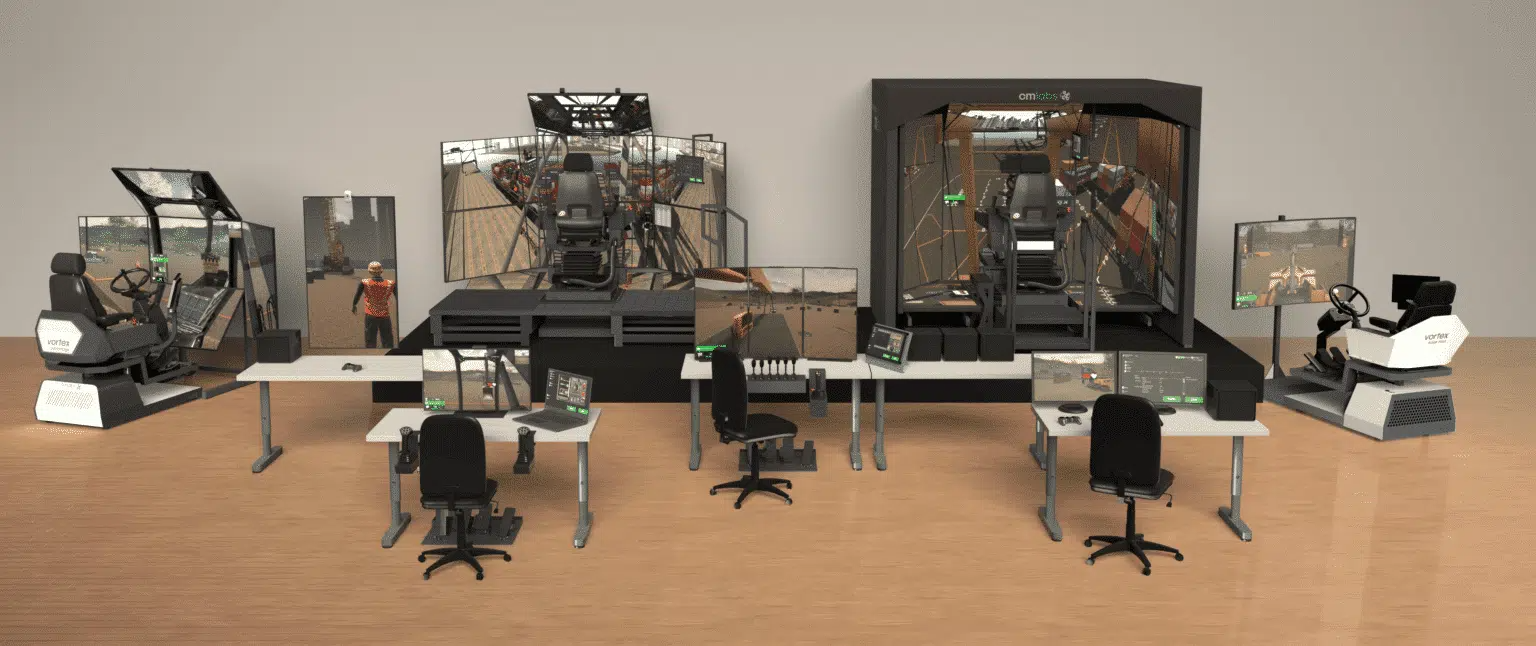What Is Simulation Training?

Simulation training is a powerful learning method that replicates real-world scenarios using digital technology. While it has been used for decades in aviation, its adoption is accelerating across various industries, including construction, utilities, ports, and others, due to its clear advantages in safety, cost savings, and skill development.
Simulation-based training recreates authentic operational environments and tasks using software and hardware. Trainees can safely learn by doing—making mistakes, adjusting strategies, and mastering controls—all without the risks or costs of live equipment. It enhances learning and helps trainees build confidence and competency in a safe, repeatable environment.
Simulation systems generally consist of two parts:
- The Simulator – the hardware interface used by trainees.
- The Simulation – the digital environment and logic powering the training experience.
- Computers: High-performance computing powers the simulation with real-time responsiveness and accurate modeling.
- Controls: Joysticks, pedals, wheels—professional-grade interfaces ensure real machine skill development.
- Motion Platform (optional): Adds physical feedback to replicate equipment behavior like vibration, tilting, and lifting.
- Visual Displays: From single to multi-screen setups, they provide immersive views tailored to each application.
- Audio Components: Realistic sound enhances environmental awareness and operational authenticity.
- Desktop Simulators: Portable, entry-level setups using a computer and attachable controls.
- Fixed-Base Simulators: Stationary units focusing on visual and control-based learning without motion feedback.
- Full-Motion Simulators: Equipped with motion platforms for high-fidelity replication of machine dynamics.
- Cab-Based Simulators: Simulators housed in real machine-style cabs for deeper immersion.
- Virtual Environment: High-detail 3D settings like worksites or port terminals with visual, audio, and environmental effects.
- Machine Behavior: Realistic responses to inputs, terrain, weather, and mechanical interactions.
- Simulation Exercises: Skill-building tasks that range from beginner to advanced and include scenario-based learning.
- Data & Reporting: Tracks performance metrics, violations, and progress for effective instructor feedback.
- Unexpected Events: Fault injections and distractions to prepare trainees for real-world unpredictability.
Simulation is most effective when the hardware and software are finely tuned together. Real-time feedback—whether through visuals, motion, or control resistance—builds true muscle memory and prepares operators to transition to real-world equipment safely.
- Allows for safe practice of dangerous scenarios.
- Accelerates learning through repetition and objective performance metrics.
- Reduces equipment wear and training-related downtime.
- Minimizes emissions compared to fuel-consuming machinery.
- Offers training 24/7, independent of weather or equipment availability.
- Aviation: For safe, repeatable pilot training.
- Forestry: Training in heavy timber machinery handling.
- Construction: Operator safety and efficiency in complex jobsite tasks.
- Utilities: Emergency readiness and maintenance operations.
- Ports: Cargo handling and logistics operations.
- Defense: Combat training and equipment handling.
- Agriculture: Precision farming and equipment training.
- Healthcare: Surgery and emergency response simulation.
- Mining: Equipment operation and fuel efficiency training.
Final Thoughts
Simulation-based training is revolutionizing how industries prepare their workforce. By combining realistic environments with advanced performance tracking, simulation delivers a powerful, immersive learning experience that improves safety, reduces training costs, and accelerates skill development. As industries face growing demands for efficiency and preparedness, simulation training provides a scalable, sustainable, and highly effective solution. Whether you're training equipment operators, utility crews, or medical professionals, simulation gives learners the confidence and competence they need—before stepping into real-world environments.



